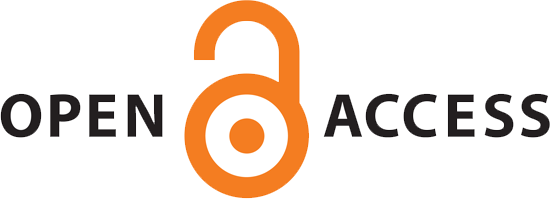A Case Report of Erythema Nodosum Following Letrozole Administration in a 44-Year-Old Iranian Female Patient With Breast Cancer
Abstract
Letrozole, a nonsteroidal aromatase inhibitor, is the adjuvant endocrine treatment for postmenopausal women
with estrogen receptor-positive breast cancer. Erythema nodosum (EN) is a rare skin adverse effect of letrozole
which has been previously reported in a few case reports. We report a new case of EN-induced by letrozole in
a 63-year-old Iranian woman with left breast cancer who was estrogen receptor-positive. Physical examination
and laboratory findings were consistent with EN. Manifestations resolved following discontinuation of
letrozole and treatment with oral prednisolone. This case highlights EN as a potential adverse effect of letrozole.
Clinicians should be aware of this rare but significant reaction, as early recognition and discontinuation of the
offending agent can lead to complete resolution of symptoms.
Kroshinsky D, Callen J, Ofori A, Post T. Erythema nodosum. UpToDate Inc Waltham (MA). 2021.
Leung AK, Leong KF, Lam JM. Erythema nodosum. World J Pediatr. 2018;14:548-554.
Ratre P, Mishra K, Dubey A, Vyas A, Jain A, Thareja S. Aromatase inhibitors for the treatment of breast cancer: A journey from the scratch. Anticancer Agents Med Chem. 2020;20(17):1994-2004.
Mukherjee AG, Wanjari UR, Nagarajan D, Vibhaa K, Anagha V, Chakraborty R, et al. Letrozole: Pharmacology, toxicity and potential therapeutic effects. Life Sci. 2022;310:121074.
Kim YJ, Cohen PR. Anastrozole-induced dermatitis: report of a woman with an anastrozole-associated dermatosis and a review of aromatase inhibitor-related cutaneous adverse events. Dermatol Ther. 2020;10:221-229.
Shoda H, Inokuma S, Yajima N, Tanaka Y, Setoguchi K. Cutaneous vasculitis developed in a patient with breast cancer undergoing aromatase inhibitor treatment. Ann Rheum Dis. 2005;64(4):651-652.
Wong M, Grossman J, Hahn BH, La Cava A. Cutaneous vasculitis in breast cancer treated with chemotherapy. Clin Immunol. 2008;129(1):3-9.
Trancart M, Cavailhes A, Balme B, Skowron F. Anastrozole‐induced subacute cutaneous lupus erythematosus. Br J Dermatol. 2008;158(3):628-629.
Jhaveri K, Halperin P, Shin SJ, Vahdat L. Erythema nodosum secondary to aromatase inhibitor use in breast cancer patients: case reports and review of the literature. Breast Cancer Res Treat. 2007;106:315-318.
Marinchev L, M K. Erythema Nodosum as a Reactive Vasculitis, Induced by Letrozole the Rapyin a Patient with Hormone - Sensitive Breast Cancer. American J Arthritis. 2019;3(1).
Naranjo CA, Busto U, Sellers EM, Sandor P, Ruiz I, Roberts E, et al. A method for estimating the probability of adverse drug reactions. Clin Pharmacol Ther. 1981;30(2):239-245.
Santoro S, Santini M, Pepe C, Tognetti E, Cortelazzi C, Ficarelli E, et al. Aromatase inhibitor‐induced skin adverse reactions: exemestane‐related cutaneous vasculitis. J Eur Acad Dermatol Venereol J Eur Acad Dermatol Venereol. 2011;25(5):596-598.
Behbahani S, Geisler A, Kolla A, Dreker MR, Kaunitz G, Pomeranz MK. Art of prevention: The importance of dermatologic care when using aromatase inhibitors. Int J Women's Dermatol. 2021;7(5):769-773.
Ebrahim M, Treyster Z. Steroidal and nonsteroidal aromatase inhibitors induced dermatitis-a case report of cross-reactivity. Ann Allergy Asthma Immunol. 2022;129(5):S84-S85.
Pérez-Garza DM, Chavez-Alvarez S, Ocampo-Candiani J, Gomez-Flores M. Erythema nodosum: a practical approach and diagnostic algorithm. Am J Clin Dermatol. 2021;22(3):367-378.
| Files | ||
| Issue | Vol 13, No 2 (Spring 2025) | |
| Section | Case Report(s) | |
| DOI | https://doi.org/10.18502/jpc.v13i2.19312 | |
| Keywords | ||
| Letrozole Breast Cancer Dermatologic Erythema Nodosum | ||
| Rights and permissions | |

|
This work is licensed under a Creative Commons Attribution-NonCommercial 4.0 International License. |

